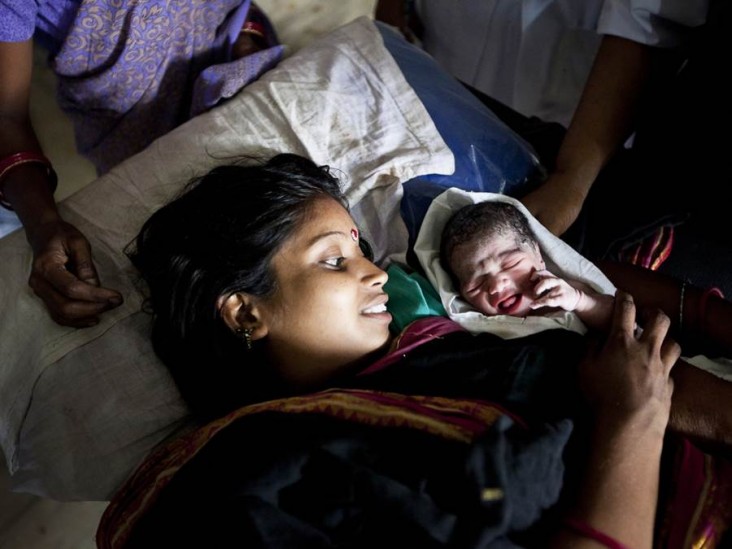Speeches Shim

February 2016—Like every day, Satyavati Devi has just finished singing the same lullaby to her 3-month-old son, Shubham. And like every day, Shubham quickly falls asleep in his mother’s arms to the gentle sounds of her humming. Careful not to wake him up, Devi quietly puts Shubham on the bed and begins to tiptoe out of the room. After she walks a few steps, Devi turns around and goes back to kiss Shubham on his forehead.
“He’s God’s gift to me … a miracle,” she whispers.
Shubham is indeed a miracle. But he is also a result of hard work, of the combined and committed efforts of the Government of India, development partners such as USAID, the private sector, local health care workers and, of course, mothers.
In India, 46,000 mothers and nearly 700,000 newborns die every year during or immediately after delivery.
Over the last 20 years, India has achieved tremendous progress in saving its mothers and children. Since the 1990s, child and maternal mortality rates in India have declined by more than 55 and 58 percent, respectively. The Indian Government’s new approach of integrating local health workers into the national health care system has benefitted millions of mothers in the country.
The progress is real and clear. That is why, since 2012, USAID has supported the Government of India to advance its goal of ending preventable child and maternal deaths by 2035.
“Earlier, there used to be many problems with pregnancies,” says Devi. “There were no facilities. If someone went into labor during the night, they would have to take her to the hospital on a bike. If she started to bleed on the way, she would die on the roadside. Now, you call the ambulance, they come home and take the mother to the hospital. At the hospital, the doctor and the nurse take care of you.”
When Devi was pregnant, an accredited social health activist came to her house. “She keeps track of every woman who is pregnant and the progress she is making,” says Devi. She really took care of me like my own sister.” Prompted by the activist, Devi had Shubham vaccinated and practices proper hygiene at home.
USAID supports high-impact interventions during labor, delivery and the post-partum period to reduce maternal mortality, saving both mothers and newborns. During 2015, USAID worked with the Government of India’s Ministry of Health to increase access to skilled health care providers for deliveries, comprehensive and integrated antenatal care, and immunizations for children. The results are transforming thousands of families and communities as mortality rates and disease decline while access to quality health care increases.
USAID’s activities include accelerating the roll-out of the Government of India’s Reproductive, Maternal, Newborn, Child and Adolescent Health (RMNCH+A) strategy by establishing a supervisory support system for health workers and conducting supervision visits in more than 500 facilities across 30 high-priority districts.
USAID also helped the government organize the Global Call to Action Summit 2015—Ending Preventable Child and Maternal Deaths. The summit created a global platform for India and 24 other countries to share their best strategies and achievements, learn from inspiring stories of women like Devi, and agree on a common set of goals to reduce neonatal mortality and stillbirth rates to less than 10 deaths per 1,000 live births by 2030.
The summit not only proved to be a huge success, but also reaffirmed the belief that one day, like Satyavati Devi, every mother will live to sing a lullaby to her child.
LINKS
Follow @usaid_india, on Facebook, on Flickr, on YouTube

Comment
Make a general inquiry or suggest an improvement.